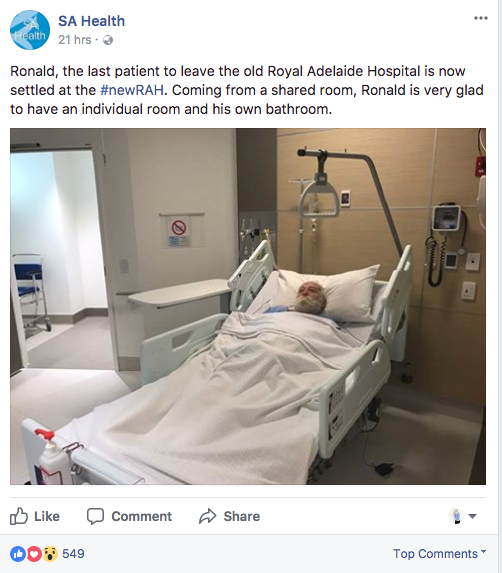Marketing has evolved dramatically in the past few decades, but there is one thing that has always remained constant: the power of storytelling. As a communication tool, the humble story is unrivalled in its ability to connect with communities and boost engagement for government agencies.
In the paradigm of marketing, storytelling can be described as weaving your idea or information within a narrative. There are no limits to how you can tell your story, and social media in particular makes it easier than ever. Sharing updates, publishing videos, creating photo stories, live-streaming, building groups – new possibilities are emerging every day, and the results are consistently impressive.
Why is storytelling in government so successful?
We’ve become hyper-efficient at shutting out marketing messages, but tell us a great story and you’ll have our undivided attention.
There’s a scientific basis for this. Stories have been shown to light up the areas of the brain responsible for empathy, compassion and co-operation, controlled by the feel-good chemical oxytocin.
The effect is especially strong when they story resonates with us on a personal level. In other words, the best stories are the ones we can see ourselves in. When the characters resemble us in some way, we get a sympathetic high from seeing them succeed or benefit or overcome the odds. We also form a personal connection to the source of the high.
Messages delivered as stories can be up to 22x more memorable than just facts.
How can storytelling help government agencies?
As a government communications professional, you know the importance of engaging with your communities, service users or constituents. Engagement is usually based on a positive emotional relationship, so if your people don’t know the ‘human side’ of your Department or don’t trust you, they’re going to shut you out. Storytelling is the most powerful way to overcome this and create an emotional bond with your community.
Personal, Engaging and Humanising
In many cases, it’s rare for the community to get a glimpse of the real people behind government agencies. Nobody wants to engage with a faceless machine of an organisation, and the result is a disconnected community that doesn’t understand what you do, how it affects them, or why they should care.
Storytelling can completely transform how people view your department. Tales of good deeds, individual triumphs and real people going the extra mile for the community – the right story can help you to put relatable faces to your agency and inspire people to connect with your department on a personal level. And by telling people stories of others just like them, you’re illustrating the value you provide them and encouraging people to picture themselves as part of your community.
Simple, Accessible and Interesting
Topics like government budgeting, transport planning and healthcare provision can be poorly understood. Perhaps the subject matter is too complex, or it’s not interesting enough to cut through this information-rich state. Perhaps they just don’t see how it affects them. Whatever the reason, agencies in certain fields might find it difficult to connect with their service users.
Stories can help by simplifying complex topics, bringing serious subjects to life, and turning dry data into memorable messages. Their appeal spans all ages, cultures and abilities, which opens up communication to include traditionally hard-to-engage groups like young children, diverse communities and those with low literacy.
SA Health have done a stellar job storytelling their move from the old Royal Adelaide Hospital to the new hospital site. They social content includes personal stories about patients and staff, media coverage and their Facebook cover page video is a story about the new site.

How to tell your agency’s story
Develop a narrative
Stories follow a basic narrative structure with a beginning, middle and end. With your narratives, you need to establish an emotional connection, so make the character (or story subject) relevant to your audience, perhaps sharing the same characteristics, goals, dreams or fears of your community.
In the middle, you introduce a conflict, challenge or problem. This should be something your audience can relate to, and the conflict can be related to your Department or a problem that your community is facing.
In the end, your character should find a resolution, ideally helped by you. Your audience will be emotionally invested in the character’s success, and you want them to associate you with the positive outcome.
Appeal to emotions
Organisations often try to think big, but simple emotional appeals are the key to creating impactful stories. Some of the most popular viral videos have featured stories that made us feel intense joy, anger, excitement, fear, triumph, or a combination thereof.
Find members of your community who have overcome adversity, or champion those who are doing inspirational things. Share contagious moments of pure happiness and rally together against the darker moments of life. Whatever your story, tell it with authenticity, passion and enthusiasm and your audience will be rapt.
Focus on people
While it may be tempting to talk about your agency, the truth is that people want to hear about other people. It sounds counterintuitive not to talk about yourself – after all, how will people know about you if you don’t tell them? But it’s the human element that sticks with your audience long after they hear your story. If you get that right, awareness and engagement will follow naturally.
Share creatively
There are so many ways to share your story. Infographics are great for distilling complex information into bite-sized facts and figures, while videos are wonderful tools for sharing human interest stories. Memes inject humour into a story, while live streams help people to feel like they’re part of the action.
Sharing doesn’t have to be complicated, either. You can split several simple Facebook updates into chapters of a story to keep your audience coming back for more. You can even encourage users to generate the content themselves by submitting photos, quotes, testimonials or short stories. The only limit is your creativity!
Everybody has a story to tell. Janine can help you tell it.
If your agency has staff, you have a story. If your agency deals with people, you have a story. If your agency has ever helped somebody in any meaningful way, you have a story, and your community is waiting to hear it!
Communications in government expert Janine Marin specialises in helping the public sector to boost community engagement via digital media storytelling. If you have a tale waiting to be told, contact Janine now to bring your story to life.



